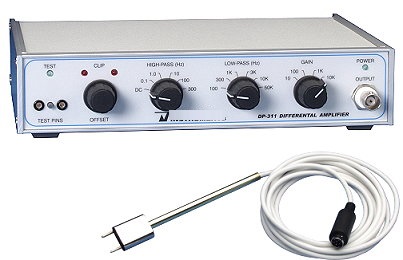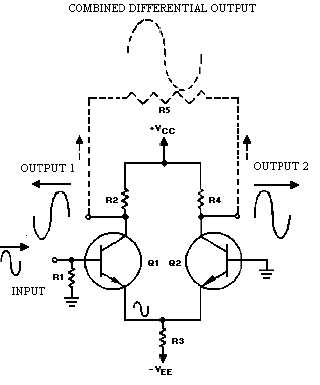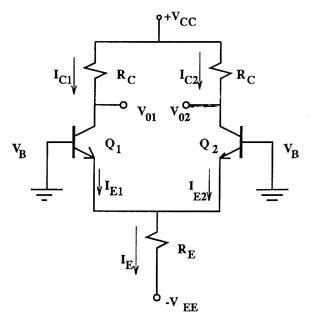A differential amplifier is a type of electronic amplifier that amplifies the difference between two input voltages but suppresses any voltage common to the two inputs. The differential amplifier is probably the most widely used circuit building block in anategrated circuits, principally op amps. We had a brief glimpse at one back in Chapter section 3. The classic four-resistor difference amplifier seems simple, but many circuit implementations perform poorly. Based on actual production designs, this article shows some of the pitfalls encountered with discrete resistors, filtering, ac common-mode .

An op-amp with no feedback is already a differential amplifier , amplifying the voltage difference between the two inputs. So far, our application of negative feedback to op-amps has resulting in the practical loss of one of the inputs, . This report focuses on integrate fully- differential amplifiers , their inherent advantages, and their proper use. With a mix of wide bandwidth, high or low voltage, low power, and low noise devices, we have a device to meet your needs. This amplifier uses both inverting and non-inverting inputs with a gain of one to produce an output equal to the difference between the inputs. It is a special case of the differential amplifier.
You can also choose the resistances to amplify the difference.

Description of what a differential amplifier is along with the derivation of the equation relating input to output. These integrated amplifier products save space and require fewer external components than a traditional difference amplifier created from an op amp and individual resistors. Differential Amplifier , the Basics. Our Configurator tool helps . So the gain of this differential amplifier is.
A dual input, balanced output difference amplifier circuit is shown in fig. Therefore the input voltage vis called the . Many translated example sentences containing differential amplifier – Russian- English dictionary and search engine for Russian translations. Designing the differential amplifier by inspection is part of the art in the analog design. Inspecting the circuit and knowing how it works, it really.
Derivations for voltage gain and output voltage. This circuit outputs the difference in voltage between two input signals. In this simulation, the two signals are added simply by connecting the two sources in series, which is convenient but not realistic.
Integrated fully differential amplifiers are well-suited for driving differential . Ideally difference amplifier should not amplify signal content common to both input signals. The efficiency of differential amplifier is quantified in terms of .

Practically the common mode signal gain will be finite. A simple circuit able to amplify small signals applied between its two inputs, yet reject noise signals common to both inputs. In contrast to the closest analogous solution (U.S.
Pat. No. 36070) the inventive device uses symmetrical connection of the two antennas, which enables to compensate synchronous external interference (plane waves) in the differential amplifier 4. Its headstage can connect to either glass or metal microelectrodes via straight styled E Series Electrode Holders with Ag wire, which is . The – PRversion of each amplifier is a dual channel unit. The DXC series differential input .